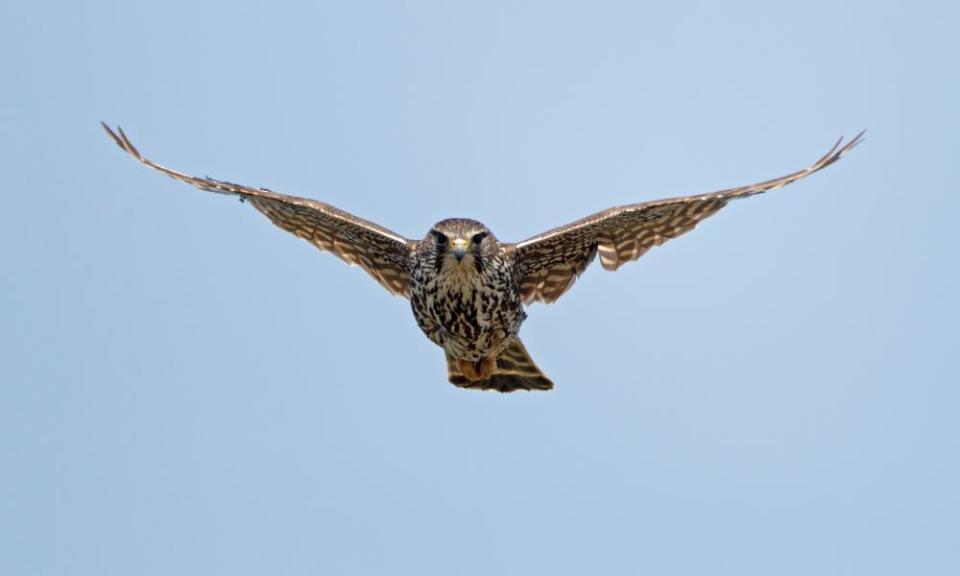Country diary: the thrilling, terrifying flight of the merlin

From nowhere a female merlin coursed along the tide and swung over the curlews and gulls gathered there, which stared skywards as one, but hunkered still. The falcon then turned and fled as a receding dark teardrop of energy. It had somehow aligned this going within the boundary of shore and shallows, so that it was nigh impossible to follow through all the backlit foam. Within five or maybe 10 seconds, it had vanished into salt air.
The sighting was exceptional because I’ve never seen Britain’s smallest raptor hunting at the sea edge. It was absolutely typical for its brevity and speed, and only with hindsight could I unpick what had happened. The merlin had swept in, checked with near-instantaneous clarity that all the birds gathered by the shore were too big for its powers and sped off for smaller shoreline dwellers – the ringed plovers, dunlins and sanderlings – that were elsewhere on the beach.
Small size suggests perhaps that merlins lack drama. It is true that among Britain’s falcons, peregrines are grander, more theatrical; hobbies are most elastic and manoeuvrable; hovering kestrels create their magical stillness; but merlins are the most exciting. The flight is invariably low and hard, and some of the joy of the bird is your being able to fix its identity – the short, pointed wings, short tail, dark colour – in the brief moment you have it in view.
What I realised most forcibly was how the energy generated in me by this creature must mirror a surge of terror in its prey. Yet I contrasted my position with theirs. I was swathed against the northerlies and in 20 minutes we’d be taking tea and cake in a hotel. We would cut our route home with car headlights and the door would open to electricity and the sounds of central heating.
Somewhere further along this beach were the small waders that merlins love to catch, and they had no defence but the vigilance of the flock and the acidic chemistry of their fear. I imagined the moment they most dread, those black eyes growing as they come close, then that yellow thicket of talons around the hammering heart.

 Yahoo News
Yahoo News 